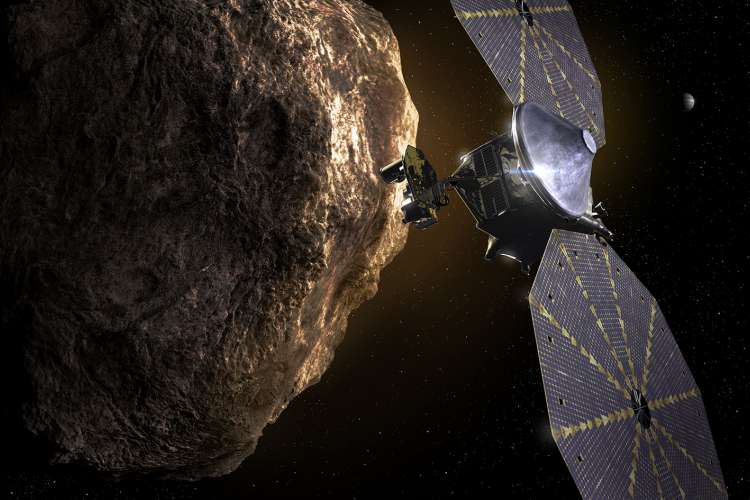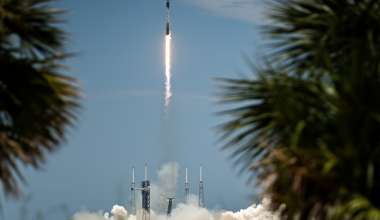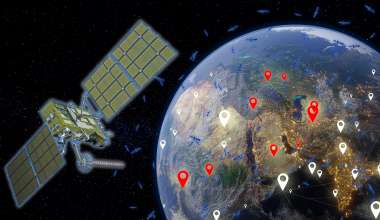In 1974, our understanding of human evolution was altered by the discovery of a 3.2 million-year-old fossilized human ancestor dubbed ‘Lucy.’ In similar fashion, NASA’s Lucy mission looks to transform our current knowledge of the solar system and planetary origins. Later this week, the spacecraft will launch on a United Launch Alliance Atlas V rocket from the Cape Canaveral Space Force Station (CCSFS) in Florida.
During its 12-year journey, Lucy will gather valuable insights by studying seven Trojans and one main belt asteroid. In particular, Lucy will be the first mission to study the Trojans—two groups of asteroids sharing Jupiter’s orbit thought to be remnants of the same material that formed the outer planets.
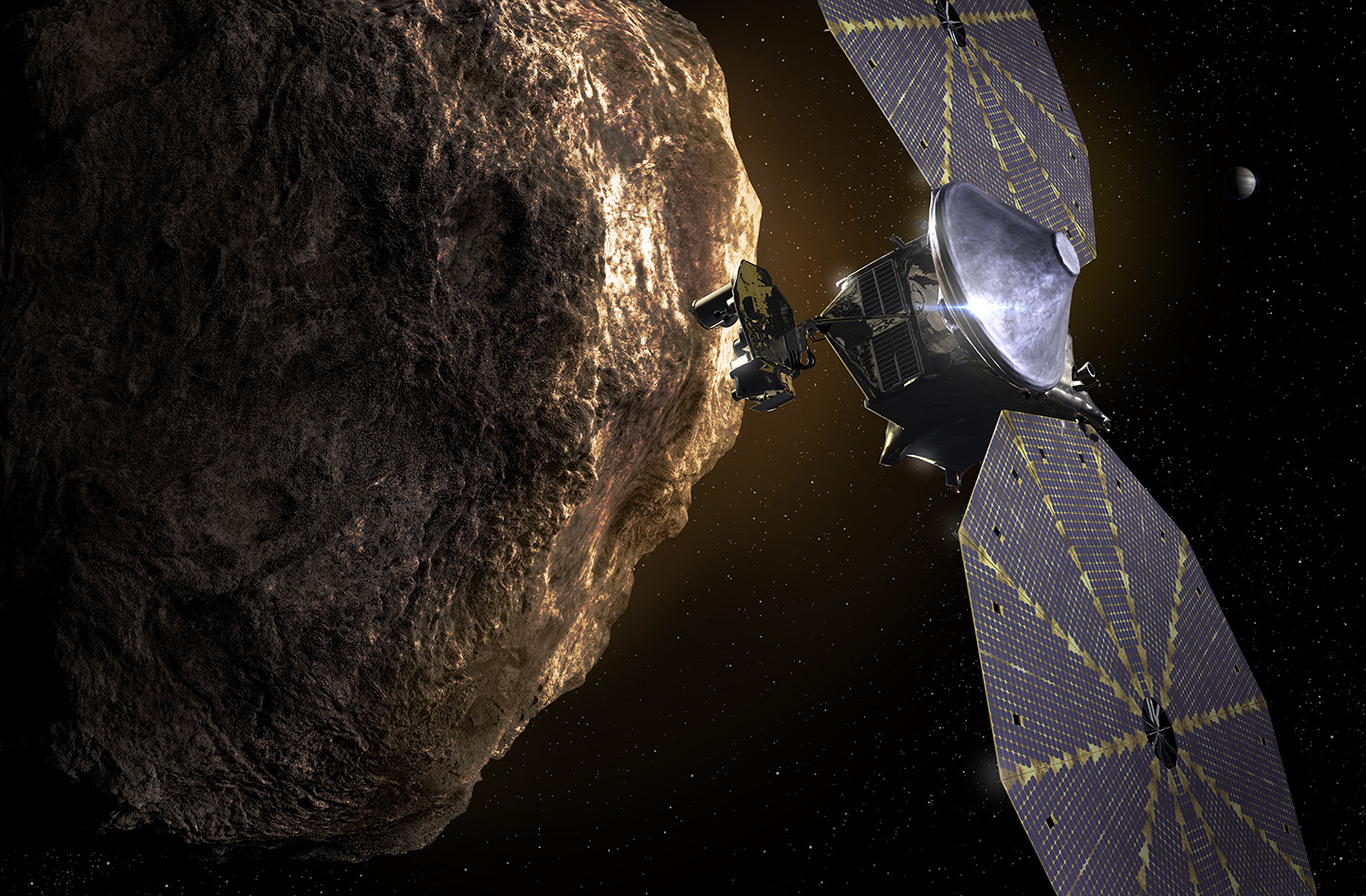
The endeavor features unique characteristics: a long mission lifecycle, complex path to navigate, and multiple targets in independent orbits around the Sun. A program of this scope presents certain complexities, and The Aerospace Corporation was able to provide its technical expertise and experience to support NASA to ensure mission success.
A Long Mission Lifespan
During its prime mission, Lucy will venture nearly 4 billion miles. The elaborate voyage will entail traveling more than three loops around the Sun and the utilization of special circular solar arrays to help the spacecraft receive the appropriate amount of solar power to carry out its mission when far away. Adding to its impressive total mileage, Lucy will be the first spacecraft to travel out to the distance of Jupiter and return to Earth’s proximity—a maneuver necessary for the final gravity assist that will send the space probe back to conduct its final Trojan flybys.
“Lucy is an unusually long mission and has a particularly complicated path through the solar system because of the multiple targets it will study,” said Allison Moeller, Senior Engineer Specialist in the Integrated Cost & Schedule Analysis Department at Aerospace. “Spacecraft go out and study things, but the different encounters did provide a level of complexity that was kind of new and took things to the next degree.”
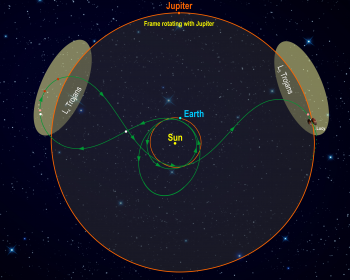
The longevity and numerous intended targets of study are distinctive qualities that presented challenges in understanding the mission’s essential needs. Relying on the heritage of NASA’s New Horizons and OSIRIS-REx—prior missions which carried the similar instruments onboard Lucy—allowed the team to better assess and identify potential risks. Looking at past success for guidance ultimately enabled personnel to reduce mission costs and achieve their timeline.
A Window of Opportunity
As a result of orbital mechanics and the intricate interplanetary course the spacecraft will need to navigate to reach all of its planned targets, the opportunity for launch is fixed. Starting on Oct. 16, NASA has a window of about three weeks to see Lucy take off from CCSFS. Even launching within this optimal period allows no room for error: its carefully calculated course means Lucy can only observe a subject once before proceeding to its next point of interest.
Therefore, following a stringent schedule was essential during the development process and a factor that Aerospace helped maintain throughout its different capacities of support. Through its work, Aerospace helped verify that the mission was staying aligned with the target launch window.
“The value in our assessments is that we have the people with the expertise to look at the mission with a fresh set of eyes,” said Nishant Prasadh, Senior Member of Technical Staff in Aerospace’s Vehicle Design and Innovation Department. “Throughout different points in the development stage, we assembled teams of subject matter experts to review prior work and identify possible risks that may not be fully realized.”
By conducting evaluations throughout the project’s progression, Aerospace personnel were able to locate potential gaps, estimate their impact on the mission, and work with NASA to mitigate such hazards. Doing so assured that Lucy would be able to meet its deadline.
Heritage of Support Key to Future Success

Many factors are considered and various types of assistance are utilized to verify that the space probe is ready for lift off. Aerospace has lent its skillset to launch-related activities, with prior customer work continuing to be relevant: The Atlas V rocket that will take Lucy into space is the same version that Aerospace has certified for U.S. Space Force National Security Space (NSS) missions.
“Aerospace has offered different forms of support for NASA during the mission’s progression,” said Randall Williams, Systems Director in Aerospace’s Launch System’s Division. “From interacting with the launch provider through general observation activities at the rocket factory and launch site to compiling mission-specific preflight analyses leading up to launch, our personnel demonstrated Aerospace’s unique industry strengths.”
On launch day, an Aerospace team will monitor the countdown and lift off from the Spacelift Telemetry Acquisition and Reporting System (STARS) Mission Operations Center. Beyond acquiring, processing and displaying launch vehicle telemetry and related findings, STARS will also archive the information to be part of sample data. To confirm the nominal performance of the launch vehicle, Aerospace will conduct fleet surveillance operations. Procuring a comprehensive system-level view of the rocket’s functions is valuable since the same model has been employed for NSS missions.
Uncovering the Unknown
Like the 20th-century discovery, which revamped our knowledge on the evolution of humanity, NASA’s newest mission will shed light on our knowledge about the solar system. With the instruments onboard, Lucy intends to gain an in-depth view of its targets—ranging from the composition of materials to the surface temperature. The pieces of data gathered could help unlock a bigger picture.
“The fossil Lucy was meant to be something like a missing link, and that’s what the motivation was for calling this mission Lucy,” Moeller said. “The idea is that we’re going to find a missing link: the history of giant planet formation. What NASA’s Lucy is meant to do is go out there, study asteroids, learn more about them, and hopefully provide more insight on how those planets were formed.”
Once in space, patience will be required as the spacecraft conducts its multiple flybys and complex route. In the end, the information gathered by Lucy over its lifetime will have a great impact, much to the mission staff’s anticipation.
“Everyone on the team at Aerospace that I worked with really enjoyed getting to be a part of this,” Prasadh said. “During the project design reviews, you could see how much this mission mattered to the NASA personnel working on the team—how much work they have put into it. The principal scientist’s enthusiasm came through all the time when he talked about the places they were looking to explore."
